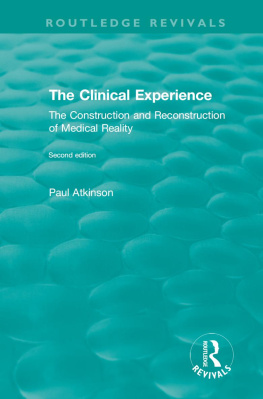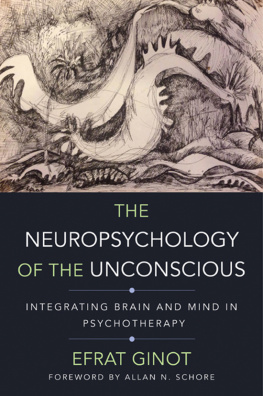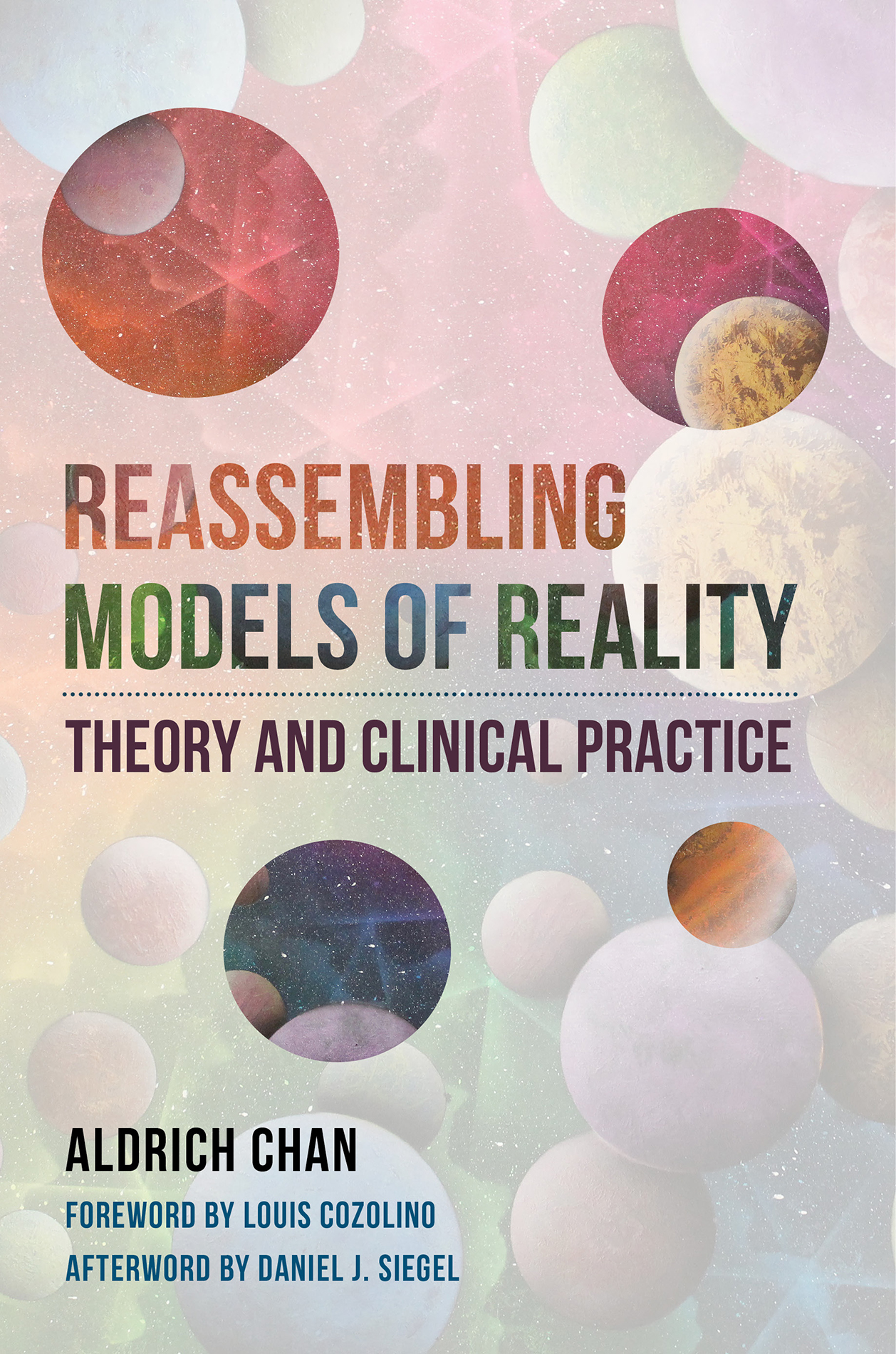Contents
Guide
Page List
THE NORTON SERIES ON INTERPERSONAL NEUROBIOLOGY
Louis Cozolino, PhD, Series Editor
Allan N. Schore, PhD, Series Editor, 20072014
Daniel J. Siegel, MD, Founding Editor
The field of mental health is in a tremendously exciting period of growth and conceptual reorganization. Independent findings from a variety of scientific endeavors are converging in an interdisciplinary view of the mind and mental well-being. An interpersonal neurobiology of human development enables us to understand that the structure and function of the mind and brain are shaped by experiences, especially those involving emotional relationships.
The Norton Series on Interpersonal Neurobiology provides cutting-edge, multidisciplinary views that further our understanding of the complex neurobiology of the human mind. By drawing on a wide range of traditionally independent fields of researchsuch as neurobiology, genetics, memory, attachment, complex systems, anthropology, and evolutionary psychologythese texts offer mental health professionals a review and synthesis of scientific findings often inaccessible to clinicians. The books advance our understanding of human experience by finding the unity of knowledge, or consilience, that emerges with the translation of findings from numerous domains of study into a common language and conceptual framework. The series integrates the best of modern science with the healing art of psychotherapy.
REASSEMBLING MODELS OF REALITY
THEORY AND CLINICAL PRACTICE
Aldrich Chan

A Norton Professional Book
Contents
BY LOUIS COZOLINO
Reassembling Models of Reality is an exploration and meditation for thinking people concerning the nature of human experience. It takes us bottom-up from sensation, to perception, to cognition; outside-in from culture, to relationships, to the individual; and top-down from abstract thinking, questions of meaning, and the construction of self. It could also be called the deconstruction of human experience and the destruction of the myth of reality, but that might be a bit much for a title.
As a cross-disciplinary field of study, interpersonal neurobiology has always brought together many perspectives in an attempt to understand the nature of human experience. If you are familiar with the Norton Series on Interpersonal Neurobiology, you are already aware of the breadth and depth of the authors and topics which have been explored. This is both a new kind of work for us while at the same time resting well within the worldview and mission of the series. The reader will find a clear through line from the work of Dan Siegel, Allan Schore, and myself over the past two decades.
Clinical psychology and the allied fields of psychotherapy and counseling have come to suffer from an overemphasis on technique and a lack of understanding of the mechanisms of action of our work. Dr. Chans work speaks directly to this gap and fills in some missing pieces. This is a smart, ambitious work filled with the best references from the right people and an excellent source book for students who want to expand their horizons into the fields of neuropsychology, philosophy, and cross-cultural studies. Reassembling Models of Reality is an ever-shifting kaleidoscope of ideas, research findings, and images, an admixture of scientific theory, philosophy, and clinical application that will expose you to new ideas and stimulate you to think in new ways.
Chans work also fits well with the contemporary stream of thinking guided by Amos Tversky, John Bargh, and Donald Hoffman, works which reflect the growing appreciation of the distortions of human perception, reasoning, and judgment. It is becoming increasing clear that evolution has selected and shaped our perception in ways which enhanced our survival as primitive animals and later as hunter-gatherers. We now face a global-technological world with a new set of problems for which our paleolithic perceptual and analytic apparatus is ill-equipped. As Jonas Salk famously said, evolution is both a problem solving and problem creating process. The problems our brains and minds were shaped to solve are mostly gone, and new problems such as cross-tribal cooperation, prejudice, and climate change require new evolutionary adaptations; adaptations which will have to take place via cooperation and acts of will rather than the twists and turns of natural selection. There appears to be a race occurring between the evolution of consciousness and the forces which threaten our survival. The practice of psychotherapy sits at the intersection of these forces.
While this perspective on human experience can be confusing and demoralizing, it also opens a window as to how we can improve our lives by learning to not accept anything and everything that bubbles up into consciousness. We need to learn to be wary consumers of our own minds and the beliefs and biases they so generously offer us. While humans have evolved to believe and not to analyze, skepticism, fact-checking, and doubting is exactly what we need to be doing with what comes from around us and inside us. This book, and the current generation of thinkers exploring the building blocks of perception and cognition, make it clear how important it is for us to learn to be skeptical of the offerings of our minds.
I found Dr. Chans discussion of the default mode network (DMN) especially informative. It is clear that he has a deep grasp of this topic, as well as its implication for human experience and healing. His coverage of the DMN is a good introduction and overview for those who are new to this interesting and extremely important area of neuroscience for psychologists and anyone interested in subjective experience. Another treat for the reader with an interest in Buddhism will be the numerous ways in which its perspectives and philosophy are explained and reinforced via Chans review of the neuroscience of sensation, perception, and cognition.
Perhaps more important than any topics he discusses is what Reassembling Models of Reality implies: the more we know, the more we are able to think about our clinical work, and the more we can view our lives from multiple perspectives, the better equipped we are to love, work, and heal others. I predict we are going to hear much more from Aldrich Chan in the years to come.
Life is a child playing, moving pieces in a game: kingship belongs to the child.
The hidden harmony is superior to the visible.
H ERACLITUS
There is more to our selves than we can ever know, more happening in any relationship than we can ever be conscious of, and more to reality than we can ever comprehend. The reaches of nature extend into a vanishing point, a continuity far beyond what we can sense and perceive. We say, Seeing is believing, yet what is it that we see? Our visual system registers less than 1% of the known electromagnetic spectrum (Sliney, 2016) and less than 5% of the known universe (Panek, 2011). We are relational animals, ever so confident in our judgment of others, overlooking that every relationship is partially imagined. Interpersonally, we rely on inferences challenged by context and predictions refracted by our minds. We think we know ourselves, yet we enter the world amnestic, ever forgetful of our rootedness in nature; with our actions determined by multiple pre-existing narratives continually streaming in and out of consciousness. Our minds are populated by selves, processes that exist on their own accord, expressing their desires in spite of our aspirations. We like to think we are directors, yet much of the time, the actors have already been cast and their roles acted out even before we have envisioned the play. We are each a brief happening in natures diffuse penumbra, a spark of light striving to illuminate a path back to its source and forward into the unknown. What do we know about our psychological experience of reality? How might this impact the way we think and live? Is there a right direction? How can we better prepare ourselves for the challenges that lie ahead?
Next page








